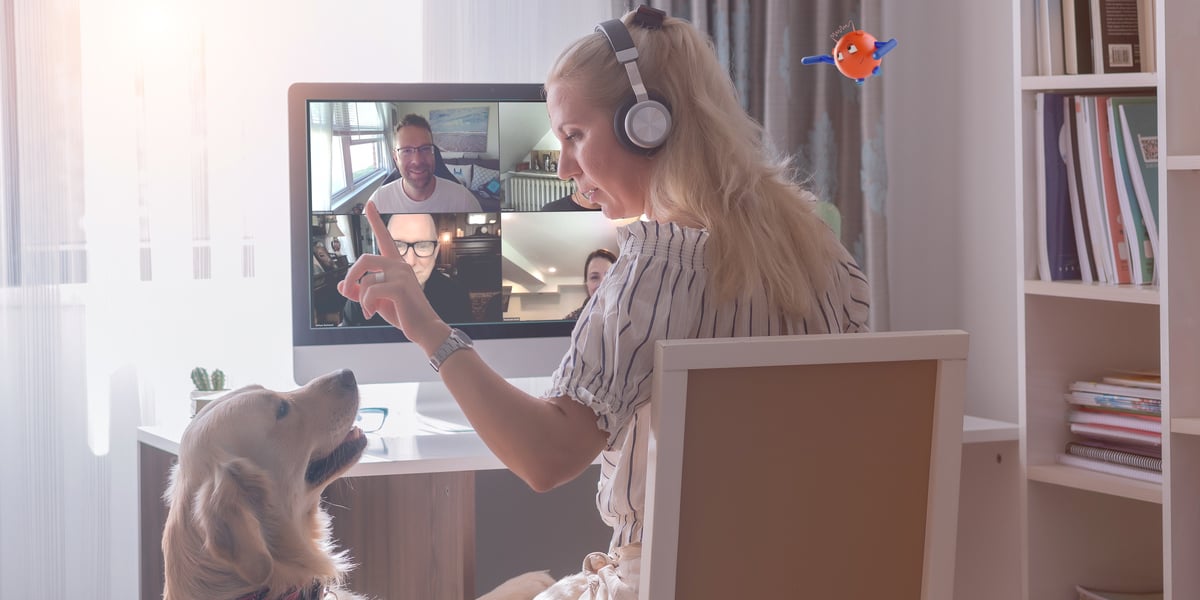Building the Future of Employee Experience With Intelligent Automation

Editor's note: this is a guest post. Views expressed in this article are the author's own views and not necessarily representative of UiPath.
Work is a major part of our lives. A third of our lives is devoted to it. Our world has billions of workers. It's a key component of our societies.
However, work has many challenges that become more and more complex. In this article, I will attempt to answer a few questions:
What are the challenges facing the world of work today?
How does the COVID-19 crisis make these problems even more complex?
How can intelligent automation (IA) help us solve these challenges?
What are the current work challenges?
According to Gallup, 85% of employees worldwide do not flourish at work. According to a Smartsheet report, "Over 40% of workers surveyed spend at least a quarter of their workweek on manual, repetitive tasks, with email, data collection, and data entry occupying the most time." Also, only a third of workers currently have access to appropriate collaboration tools or IA applications.
For the past 10 years, companies have focused on the customer experience. It is time to take a look at the "employee experience." According to an article published in the Harvard Business Review, companies that lead initiatives to improve the employee experience are four times more profitable than those that don't. IA offers us a unique opportunity to enhance this experience.
On the other hand, according to the International Labor Organization, work-related stress and the illnesses that result from it contribute to the death of nearly 2.8 million workers every year worldwide. Besides, it costs society about $3 trillion per year. There is an urgent need to improve this situation.
In this context, what is the impact of the COVID-19 crisis?
Because of COVID-19, the vast majority of the working world is currently working remotely due to closings and quarantines. Most of us have never been trained to work from home. Many suffer from isolation, lack of support, constant distractions, lack of connection, and anxiety due to the crisis. This has likely had an impact on motivation, efficiency and work-life balance, creating stress, and affecting physical and mental health.
Due to the economic downturn caused by COVID-19, more than one billion people are at risk of losing their jobs. This situation differs significantly from one sector to another (airlines are particularly affected, while computer skills are more and more in demand).
How do we solve these challenges using intelligent automation?
Here are five main levers available to world leaders to build the future of work with IA (the “fivefold-A artifact”):
1. Analysis
IA helps us identify opportunities to work better. Take the example of Fitbit or smartwatches. Thanks to personalized dashboards, IA can monitor work-life balance, reduce stress, and improve our professional behavior over time. IA helps to ‘take the pulse’ of our professional activity. For example, it can recommend some breaks during a day of meetings or even suggest automating a repetitive task. This is often done using smart platforms that collect data related to our activity on screens (e.g., calendar, apps, messaging), analyze it, and create recommendations. Examples of such technologies are Worklytics, Microsoft Workplace Analytics, and Time Doctor.
2. Automation
IA can identify and automate a large part of routine and time-consuming tasks, allowing us to focus on activities with higher added value, making them more enjoyable. For example, IA can automatically build a Microsoft PowerPoint presentation for a weekly meeting or record invoices in accounting software. IA also helps with email management (e.g., sorting and intelligent filtering) and the optimization of meetings (e.g., transcription, coach, planners). An example of automation technology is UiPath.
3. Augmentation
IA can increase the added value of work by working closely with us. For example, IA allows us to analyze millions of data points in a fraction of a second, improving the quality of our decision making. This technology can also promote remote work and team collaboration, as well as identify possibilities for retraining. Aera Technology is an example of automation technology.
4. Abandonment
Without knowing it, some of the work tasks we perform do not correspond to best practices and become obstacles to a healthy professional life. Restricting the number of meetings and volume of email is essential. For example, to increase the productivity of work meetings, inviting more than seven people is not recommended. Some of these activities should be reduced or even eliminated through regular and personalized support (for example, through using a virtual coach). An example of such technology is Microsoft MyAnalytics.
5. Anchoring
Connecting employees, companies, and other market players more closely is the key to building the future of work. In this regard, IA can increase the connection between businesses and job seekers. It can also foster and improve the sociability of employees in a company, allowing them to care more about their colleagues. Finally, IA could help support a system like universal income to reduce inequalities between people. An example of such technology is Eightfold.
I hope we will also see a new generation of applications based on IA that can bring us to the future of work. For example, platforms that can coach us in real time, allow healthier work, support us during stressful situations, or help us follow collaboration best practices.
If you enjoyed this article, check out all my intelligent automation articles on the UiPath blog.
The content of this article is inspired by the Amazon bestseller book Intelligent Automation.

Author, Intelligent Automation
Get articles from automation experts in your inbox
SubscribeGet articles from automation experts in your inbox
Sign up today and we'll email you the newest articles every week.
Thank you for subscribing!
Thank you for subscribing! Each week, we'll send the best automation blog posts straight to your inbox.



